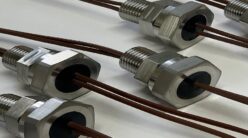
Whether building towering skyscrapers or modest homes, creating sturdy, dependable bonds is crucial in construction. The right adhesives and bonding techniques can mean the difference between structures that stand the test of time versus potential hazards down the road.
The Advantages of Adhesive Bonding
While welding, bolting and other traditional joining methods still play major roles, adhesives offer some unique advantages increasingly favored by modern builders and contractors. Adhesive bonds distribute stress more evenly compared to rigid mechanical fasteners that can concentrate stress. They also introduce no holes or gaps where moisture could get in to corrode bonded materials over time.
Perhaps most crucially, many advanced adhesive chemistries simply form extremely tough, durable bonds able to withstand punishing conditions like temperature extremes, vibrations, impacts, and more. When joined properly with the right adhesive, structural components can potentially last indefinitely.
Versatile and Durable Adhesive Options
From resilient epoxies to flexible construction mastics, today’s adhesives provide tailored options to meet diverse bonding challenges. Two-part acrylic structural adhesives remain a popular choice; their built-in primers coupled with acrylic polymers allow bonding of many dissimilar materials, including concrete, metals, plastics, and composites with serious strength.
Areas exposed to moisture and chemicals may call for advanced urethane-based adhesives. Polyurethane and polyurea formulations can establish extremely rugged, water-resistant bonds able to manage harsh environments that would cause premature failure with other adhesives.
Meanwhile, tasks like installing glazing systems, paneling, and insulation use durable reactive hot-melt adhesives and reliable hybrid sealant-adhesive products that remain permanently flexible yet offer impressive bonding abilities.
Making the Bond as Strong as Possible
Of course, an adhesive is only as good as the prep work and application, allowing it to establish a solid bond. Careful surface preparation is absolutely vital as oils, debris and surface oxidation can doom even the strongest adhesives from the start. Cleaning with solvents or abrasion creates the ideal bonding conditions.
Construction crews and contractors must also follow best practices for using the specific adhesives at hand. Some require surface primers; others use special applicators or dispensing tools to ensure proper ratios are mixed and adhesive layers are perfectly uniform for maximum surface contact.
It is quite common to also see advanced composite materials involved where adhesive bonding is essential. Carbon fiber reinforcements joined with epoxy film adhesives can deliver incredible rigidity and tensile strength for structural components in construction. According to the experts at Axiom Materials, the combined engineering allows extremely durable bonds suitable for load-bearing applications.
Exploring Future Advances
The capabilities of construction adhesives and bonding techniques will only continue expanding in the years ahead. Research into nanostructured adhesives, bio-based formulations and self-healing polymers could revolutionize our expectations for integrity and longevity.
Imagine a permanent adhesive able to automatically repair any microscopic cracks or damage as they occur. Or sustainable plant-derived adhesives providing bonding strength rivaling today’s synthetic products. The future could make today’s strongest construction bonds seem almost temporary by comparison.
Additionally, emerging additive manufacturing (3D printing) methods combined with adhesive bonding open intriguing possibilities for creating unified, seamless structural components not possible through traditional subtractive fabrication techniques.
Conclusion
While old-school fasteners will always have their place, the qualities of modern adhesive bonding make them indispensable for construction that needs to go the distance. Their ability to join any combination of dissimilar materials into sturdy, uniform structures give builders and engineers unprecedented design flexibility.
More importantly, the strength and longevity delivered by properly cured construction adhesive bonds mean the homes, buildings, and infrastructure we construct today will endure for generations. No future cracks, leaks, or failures – just confidence that these adhesive-bonded structures can withstand year after year, decade after decade.





